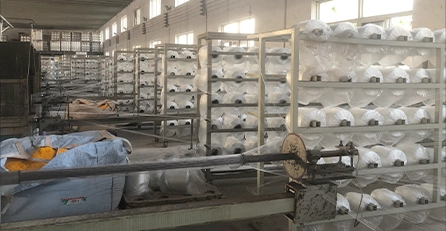vacuum hose
The Importance of Vacuum Hoses in Automotive Systems
Vacuum hoses are often overlooked components within the automotive industry, yet they play an essential role in the proper functioning of a vehicle's engine and ancillary systems. These tubes, typically made from rubber, silicone, or plastic, facilitate the transfer of vacuum pressure, which is vital for various automotive functions. Understanding the significance of vacuum hoses can help car enthusiasts and everyday drivers alike appreciate their importance and ensure their vehicles run efficiently.
An Overview of Vacuum Pressure and Its Function
Vacuum pressure is the measure of pressure that is below atmospheric pressure. In an automotive context, it is generated by the engine's intake manifold as it draws in air for combustion. This negative pressure is harnessed in various systems within the vehicle. For instance, vacuum pressure is utilized to operate components such as power brakes, which help drivers apply force more easily when braking. Additionally, it powers the HVAC (heating, ventilation, and air conditioning) systems, enabling the control of air flow within the vehicle cabin.
Construction and Types of Vacuum Hoses
Vacuum hoses are often constructed from flexible materials that can withstand variations in temperature and pressure. The most common materials include rubber, silicone, and plastic. These materials allow for the necessary flexibility and durability required in automotive applications. Additionally, vacuum hoses come in various diameters and lengths to suit different needs within a vehicle's engine bay.
There are generally two types of vacuum hoses hard hoses and soft hoses. Hard hoses, often made of plastic or metal, are utilized for longer runs where flexibility is less critical. Soft hoses, primarily composed of rubber or silicone, are used for connections that require more bendability. Both types must be checked regularly for wear and tear, as they can become brittle over time or develop leaks that compromise vehicle performance.
Common Issues Related to Vacuum Hoses
vacuum hose

Vacuum leaks can lead to a host of problems within a vehicle. A damaged or improperly connected vacuum hose can cause the engine to run lean, meaning there is too much air and not enough fuel in the combustion chamber. This can result in reduced engine performance, poor fuel economy, and increased emissions. Drivers may notice symptoms such as rough idling, stalling, or a check engine light when a vacuum hose is compromised.
Furthermore, vacuum hoses that are cracked or brittle can lead to airflow restrictions, affecting the operation of systems like power brakes and HVAC. Regular inspections can help catch these issues early, ensuring that the hoses maintain their integrity and function as intended.
Maintenance and Replacement
Routine maintenance of vacuum hoses is necessary for any vehicle owner. Checking for signs of wear, such as cracks, fraying, or discoloration, is crucial. If any damage is detected, replacing the vacuum hose should be a priority. Fortunately, replacing vacuum hoses is generally a straightforward task that can be performed by a skilled DIYer or a professional mechanic.
In the case of replacement, it is essential to choose hoses that meet the original equipment manufacturer (OEM) specifications. Using high-quality materials will ensure longevity and reliability. Furthermore, adhering to proper installation procedures is vital to prevent future leaks and ensure the system operates effectively.
Conclusion
In summary, vacuum hoses, though often taken for granted, are vital components of a vehicle's performance and efficiency. They facilitate critical functions, from power braking to maintaining comfortable cabin conditions. Recognizing the importance of these hoses and committing to regular inspection and maintenance can significantly enhance vehicle reliability and safety. For both car enthusiasts and everyday drivers, a better understanding of vacuum hoses can lead to a more enjoyable and trouble-free driving experience.
-
Top Quality Oxy Acetylene Hoses for Sale Fit for Welding DemandsNewsJul.28,2025
-
The Future of Pneumatic Air Tubes in IndustryNewsJul.28,2025
-
Superior and Reliable LPG Hose Pipe Solutions for Every NeedNewsJul.28,2025
-
Exceptionally Durable and Versatile Premium Braided PVC TubingNewsJul.28,2025
-
Best Adapters for Connecting Garden Hose to PVC Pipe ConnectionsNewsJul.28,2025
-
The Essential Role of LPG Hoses in Safe and Efficient Gas DistributionNewsJul.16,2025














